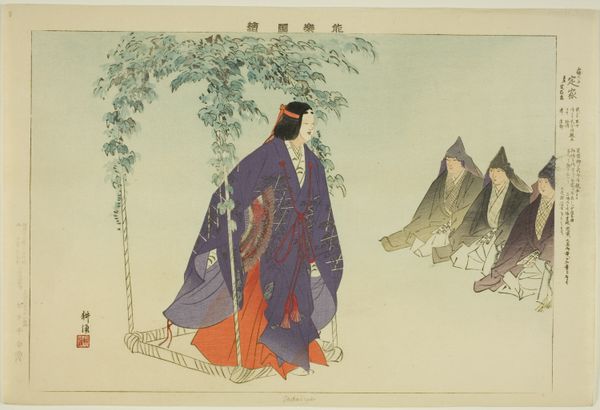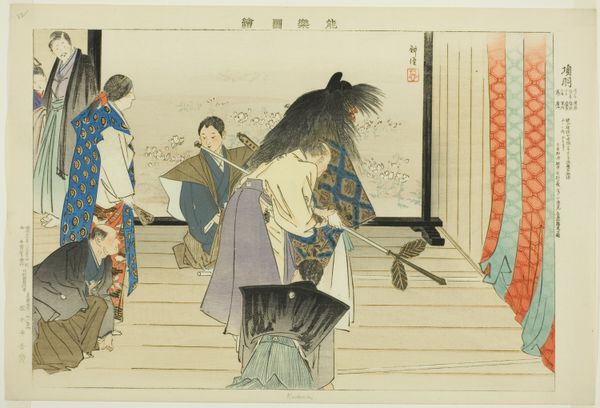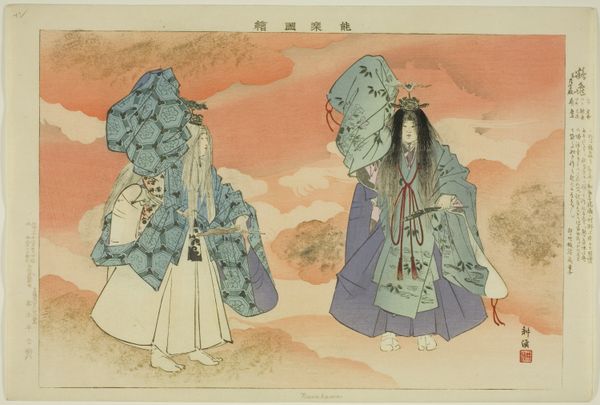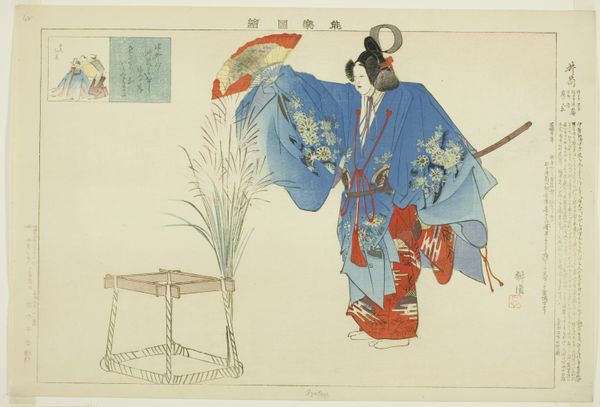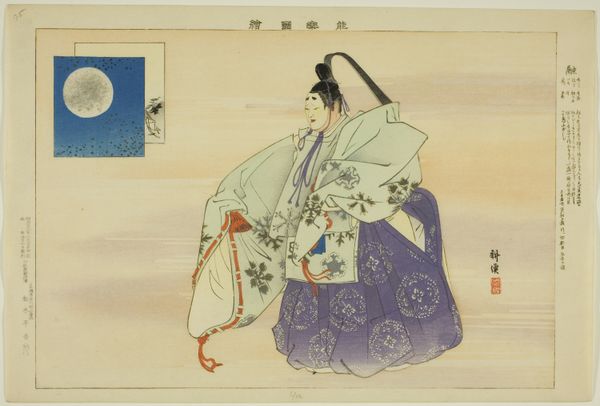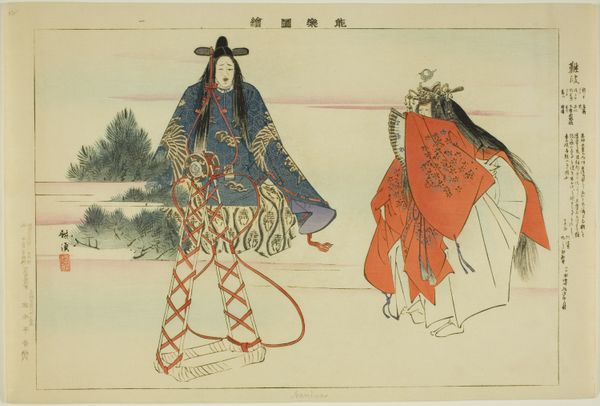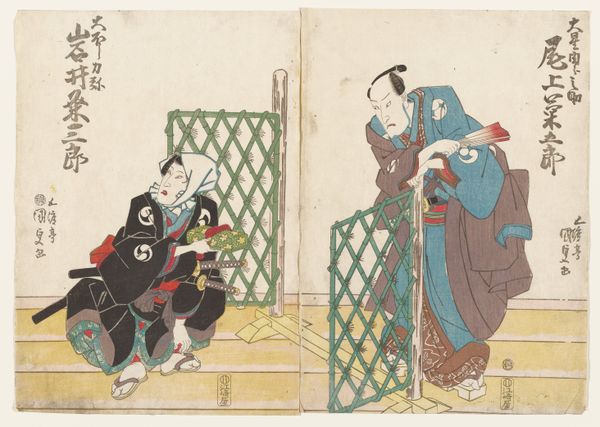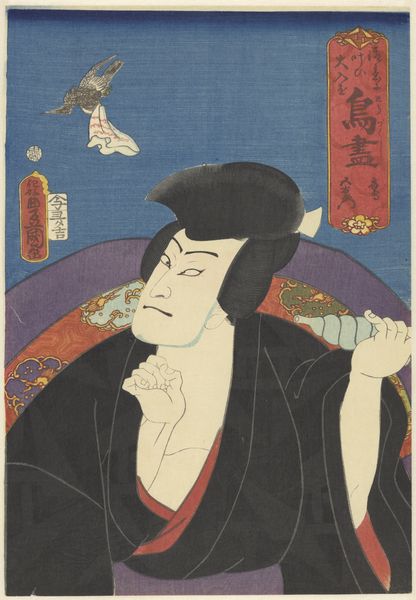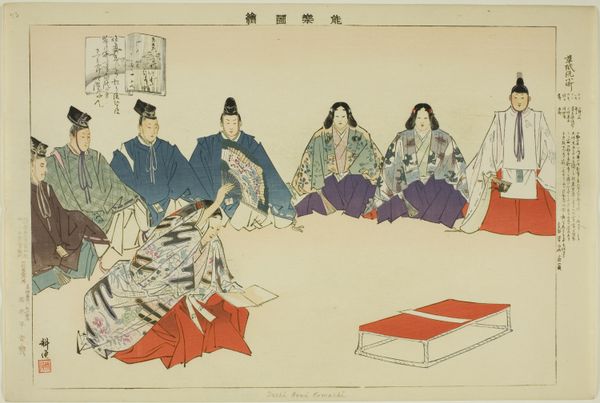
Ominameshi, from the series "Pictures of No Performances (Nogaku Zue)" 1898
0:00
0:00
Dimensions: Approx. 25.2 × 37.4 cm (10 × 14 4/3 in.)
Copyright: Public Domain
Tsukioka Kôgyo created this woodblock print, "Ominameshi," part of his series "Pictures of No Performances," during the Meiji era in Japan. The series reflects a renewed interest in No theater, supported by the Meiji government as part of a broader effort to standardize and promote traditional Japanese arts. The print depicts a character from a No play, recognizable by their elaborate costume and stylized movements. The visual codes here are drawn from No theater itself, a highly refined art form developed over centuries, incorporating elements of dance, music, and poetry. During the Meiji era, Japan was undergoing rapid modernization, and artists were grappling with how to reconcile traditional forms with new influences. Kôgyo's work can be seen as part of a larger cultural movement to preserve and celebrate Japanese identity in the face of Westernization. Understanding such cultural shifts requires delving into historical texts, theater archives, and the writings of the artists and intellectuals of the time, reminding us that art's meaning is always shaped by its historical moment.
Comments
No comments
Be the first to comment and join the conversation on the ultimate creative platform.

